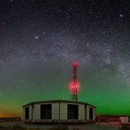Executive Department for
Press, Communication and Marketing
Adolf-Reichwein-Straße 2a Gebäude AVZ (Gebäudeteil AR-NA) 57068 Siegen
Phone: +49 (0)271/740-4915 Fax.: +49 (0)271/740-4911 E-Mail: presse@uni-siegen.de
Direct Line from Siegen to the Argentinian Pampas
Physicists from the University of Siegen can now control and monitor the detectors of the Pierre Auger Observatory in Argentina — without leaving Siegen. The Observatory is the world's largest experiment for the measurement of cosmic rays.
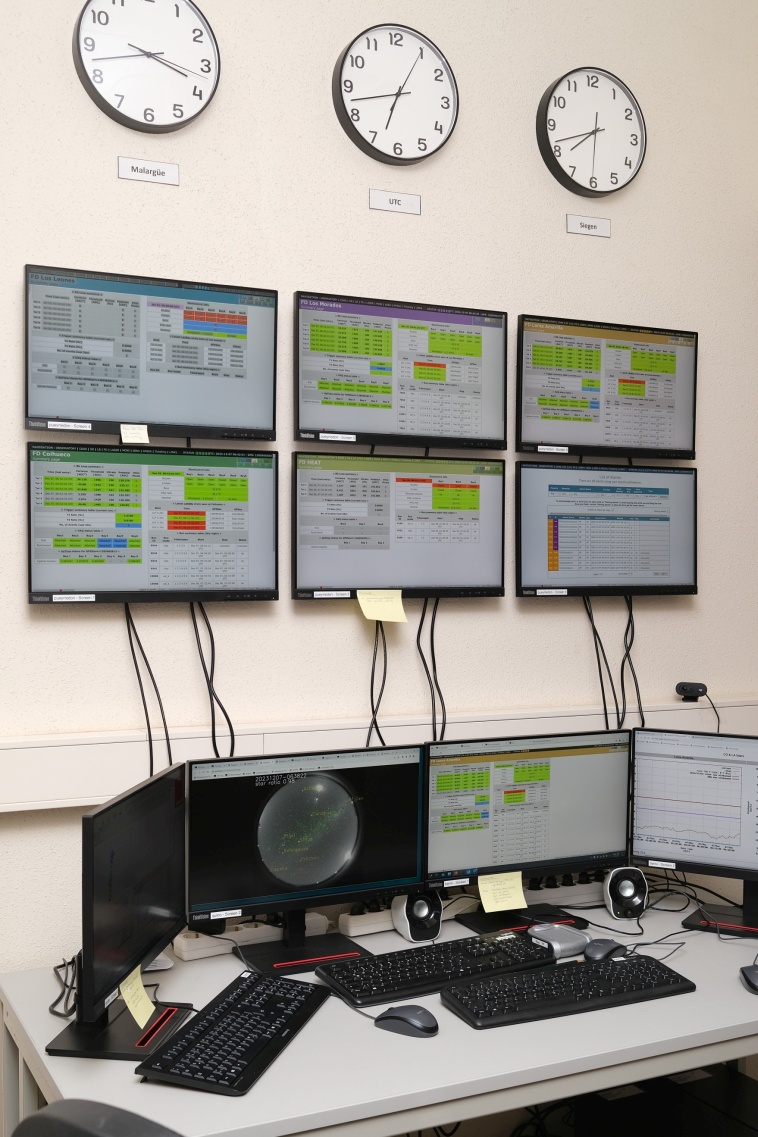
The clock reads seven a.m. and Dr. Eleonora Guido and Dr. Marcus Niechciol are almost done with their shift. It’s still dark outside, but the office shared by the physicists at the Emmy Noether Campus of the University of Siegen is plenty bright in the light of ten different monitors. Arranged in three stacked rows, the monitors feature charts, diagrams, and numbers. They reveal to Guido and Niechciol whether “everything's ok” on the Argentinian pampas some 12,000 kilometers away. That’s where the world's largest experiment for measuring cosmic rays is located: the Pierre Auger Observatory, in which Siegen physicists have been participating for almost 20 years. Together with nearly 450 colleagues from around the world, they are searching for cosmic particles that are constantly striking the Earth's atmosphere as they traverse space. The goal of the joint research is to determine which cosmic processes or objects create these particles, which in some cases are extremely energetic. It has been over a century since the cosmic rays were first discovered, yet this question remains one of the grand unsolved mysteries of modern physics.
What is new is the option for the Siegen team under Prof. Markus Cristinziani and Prof. Markus Risse to monitor and control the Argentinian detectors from the comfort of their Siegen laboratory: “Before now, we had to make an extra trip to Argentina each time it was our shift,” Niechciol explains. To keep data collection on the Argentinian pampas running as smoothly as possible, constant monitoring is needed for the high-sensitivity measurement technology used in the experiment. This includes 1,600 water tanks outfitted with detectors as well as four large telescope stations on the Observatory's grounds: They are capable of capturing the fluorescence light that is emitted when cosmic particles strike the Earth's atmosphere. The researchers draw on the data to make inferences about the origin and nature of the cosmic particles. Back in the Siegen office of Guido and Niechciol, each of the four telescope stations has its own dedicated monitor.
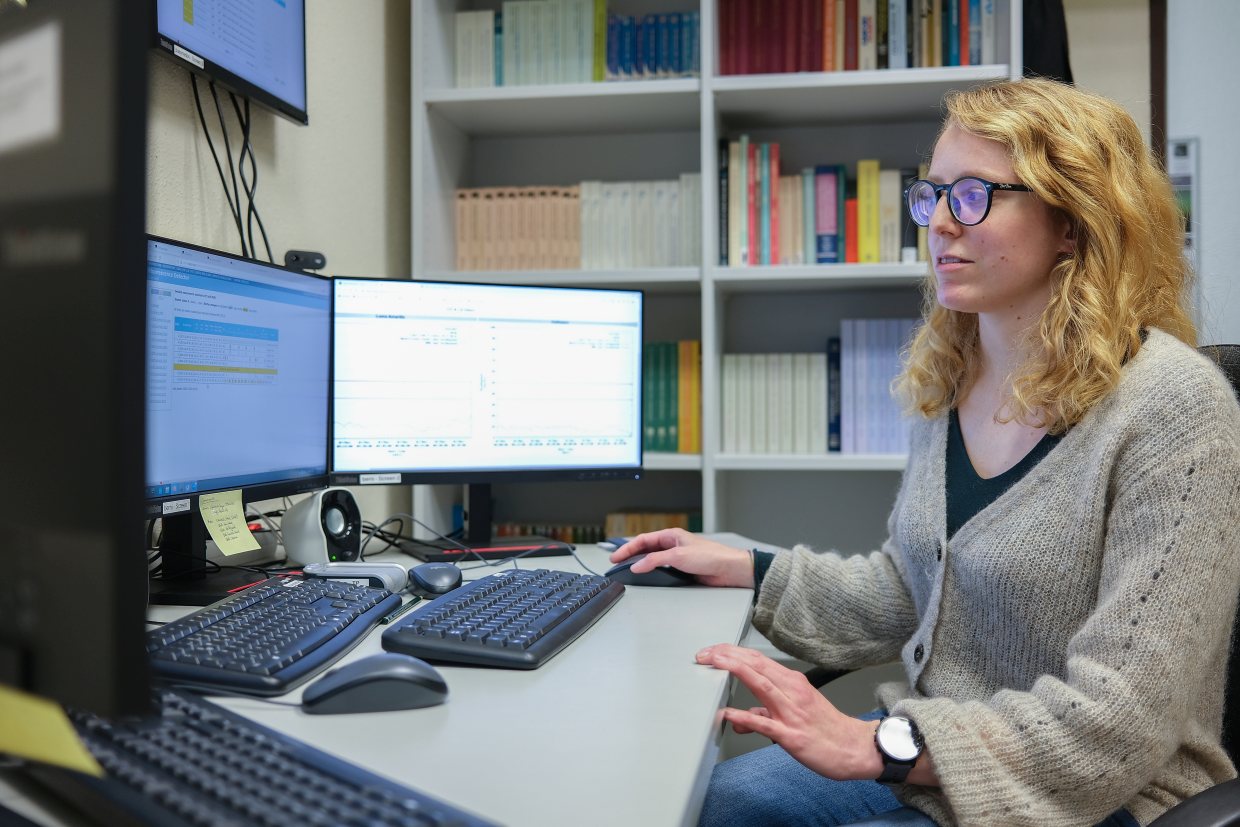 “We’ve
been monitoring the telescope since midnight, and hopefully
have recorded a number of beautiful cosmic ray events,” says
Eleonora Guido before sitting down at the keyboard: The moon is
in a less-than-ideal position above the Argentinian pampas, and
because the bright moonlight can disrupt the sensitive
measurements, the physicists are now closing the telescopes
remotely. “Beyond the path of the moon, we also closely track
the weather,” Niechciol explains. “If there are storms, strong
winds, or heavy rainfall in the region, then we have to react
by closing the telescopes as quickly as possible to prevent the
delicate sensors from being damaged.” Once the danger has
passed, it's crucial that those steps then be reversed: The
systems are reopened to allow data collection to resume with as
little downtime as possible.
“We’ve
been monitoring the telescope since midnight, and hopefully
have recorded a number of beautiful cosmic ray events,” says
Eleonora Guido before sitting down at the keyboard: The moon is
in a less-than-ideal position above the Argentinian pampas, and
because the bright moonlight can disrupt the sensitive
measurements, the physicists are now closing the telescopes
remotely. “Beyond the path of the moon, we also closely track
the weather,” Niechciol explains. “If there are storms, strong
winds, or heavy rainfall in the region, then we have to react
by closing the telescopes as quickly as possible to prevent the
delicate sensors from being damaged.” Once the danger has
passed, it's crucial that those steps then be reversed: The
systems are reopened to allow data collection to resume with as
little downtime as possible.
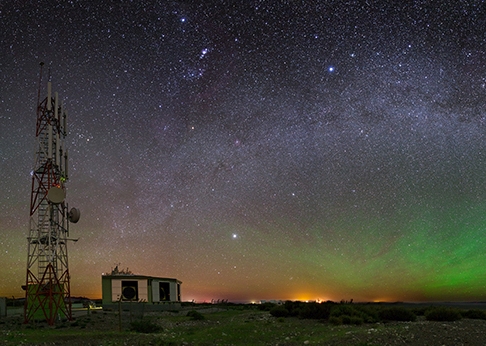 The researchers are also tasked with reacting to unforeseen
events during their shift. That can be a stressful experience,
the team notes: “Just before our shift began today, there was a
power outage in the Observatory's region. We had to reboot many
of the computers there, which meant that we got to a bit of a
later start to recording data than was planned.” Other
technical issues can also arise. The Siegen team receives
notifications of this as red messages on their screens. In some
cases, an acoustic signal is produced as well. The task is then
to identify the source of the problem, which is sometimes
anything but easy, Niechciol says: “There is an enormous
catalog of potential causes. Even with years of experience at
the Observatory, nobody can know all of them. In a worst-case
scenario, we have to rouse a technician in Argentina from bed
to deal with the issue on site.”
The researchers are also tasked with reacting to unforeseen
events during their shift. That can be a stressful experience,
the team notes: “Just before our shift began today, there was a
power outage in the Observatory's region. We had to reboot many
of the computers there, which meant that we got to a bit of a
later start to recording data than was planned.” Other
technical issues can also arise. The Siegen team receives
notifications of this as red messages on their screens. In some
cases, an acoustic signal is produced as well. The task is then
to identify the source of the problem, which is sometimes
anything but easy, Niechciol says: “There is an enormous
catalog of potential causes. Even with years of experience at
the Observatory, nobody can know all of them. In a worst-case
scenario, we have to rouse a technician in Argentina from bed
to deal with the issue on site.”
The telescopes are not the only component of the detectors that the Siegen team can control remotely: They also have access to lasers that are routinely activated to check the atmospheric observation conditions. And radio antennas installed on the water tanks that register radio waves triggered by cosmic rays. The team also signs up regularly in coordination with international colleagues for shifts at the observatory covering other responsibilities, typically running over several nights (or, in the case of the radio antennas, days). The next generation of Siegen researchers are also taking part in the experiment, gaining practical experience and learning to assume responsibility as part of shift scheduling. Caring for highly sensitive and expensive measurement technology is one part of this. But so also is the responsibility for nearly gapless collection of high-quality data. That data is then used by researchers around the world in the attempt to solve the riddle of cosmic rays.
Background:
Physicists from the University of Siegen have been researching at the Pierre Auger Observatory since 2004. They work in collaboration with four other German universities. The Federal Ministry of Education and Research (BMBF) provides funding for the research, providing the University of Siegen with almost 600,000 euro in funding through 2026. Siegen physicists are involved both with the analysis of data collected at the Observatory as well as directly in the improvement of the measurement technology. Since early December 2023, the Siegen team has been able to monitor the detectors in Argentina remotely.
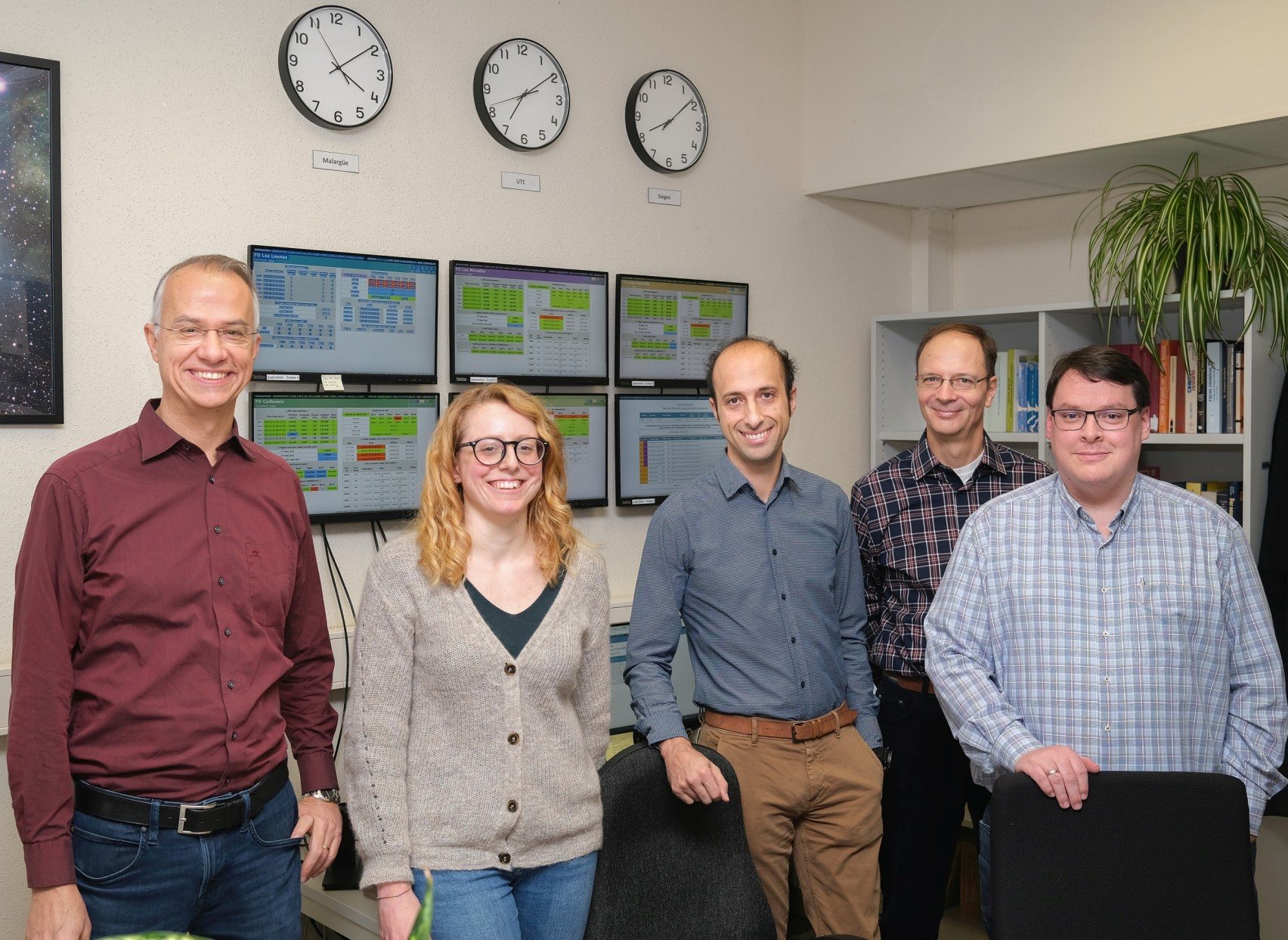
An extensive interview with Dr. Marcus Niechciol on the research at the Pierre Auger Observatory in Argentina can be found in the current episode of our science podcast Spark!
Working for the University of Siegen at the Pierre Auger Observatory in Argentina with: Prof. Markus Cristinziani, Dr. Eleonora Guido, Dr. Qader Dorosti, Prof. Markus Risse, and Dr. Marcus Niechciol (from left)
(Copyright for pictures of Pierre Auger Observatory held by Steven Saffi, University of Adelaide, Pierre-Auger-Collaboratio)

